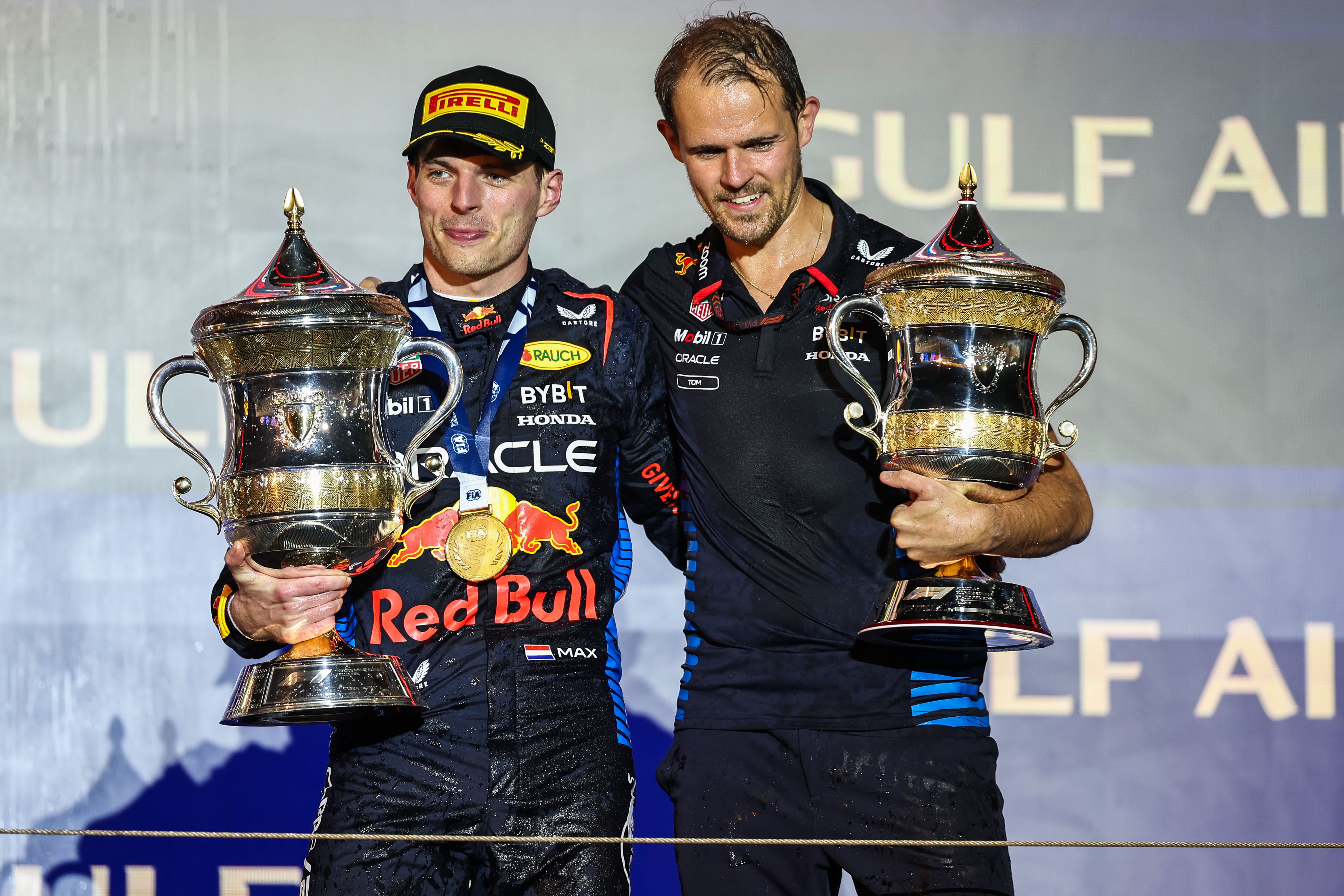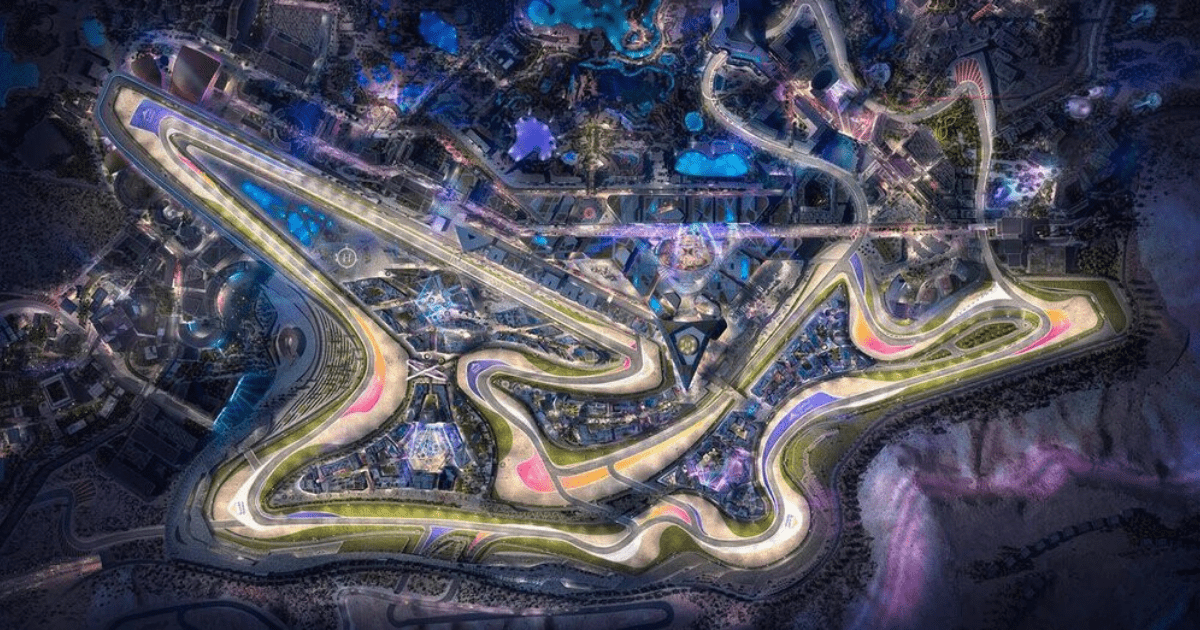STRAP in F1 fans! The Saudi Arabian Grand Prix is making a comeback, and the Jeddah circuit might not host many more races.
Verstappen vs. Hamilton
All eyes are on Jeddah as Max Verstappen aims to maintain his dominance in F1 following his win in the Bahrain opener. He finished a whopping 22 seconds ahead of second-placed Sergio Perez and a staggering 50 seconds faster than Lewis Hamilton, who secured seventh place.
When is the F1 Saudi Arabian Grand Prix 2024?
- The F1 Saudi Arabian Grand Prix 2024 will kick off on Saturday, March 9.
- Action is expected to start at 5pm GMT.
- The Jeddah Corniche Circuit is set to host a massive crowd of 150,000 fans over the three-day event.
Where to Watch
- You can catch the Saudi Arabian Grand Prix LIVE on Sky Sports F1.
- Sky Sports subscribers can stream the race on the Sky Go app or Sky Sports website.
- For NOW TV users, the race will also be available on all mobile devices and tablets.
Full Race Schedule
Thursday, March 7
- Practice One – 1:30pm
- Practice Two – 5pm
Friday, March 8

- Practice Three – 1:30pm
- Qualifying – 5pm
Saturday, March 9
- Race – 5pm
All times are in GMT
Current Driver Standings
- Max Verstappen – Red Bull: 26 points
- Sergio Perez – Red Bull: 18 points
- Carlos Sainz – Ferrari: 15 points
- Charles Leclerc – Ferrari: 12 points
- George Russell – Mercedes: 10 points
- Lando Norris – McLaren: 8 points
- Lewis Hamilton – Mercedes: 6 points
- Oscar Piastri – McLaren: 4 points
- Fernando Alonso – Aston Martin: 2 points
- Lance Stroll – Aston Martin: 1 point
- Zhou Guanyu – Kick Sauber: 0 points
- Kevin Magnussen – Haas: 0 points
- Daniel Ricciardo – RB: 0 points
- Yaki Tsunoda – RB: 0 points
- Alex Albon – Williams: 0 points
- Nico Hulkenberg – Haas: 0 points
- Esteban Ocon – Alpine: 0 points
- Pierre Gasly – Alpine: 0 points
- Valtteri Bottas – Kick Sauber: 0 points
- Logan Sargeant – Williams: 0 points
Frequently Asked Questions
How important is aerodynamics in Formula 1?
In Formula 1, aerodynamics play a crucial role in the performance and handling. The car’s bodywork and wing design are used to increase downforce. This increases grip on the track. Drag reduction is also important for maximising straight-line speed. Aerodynamic efficiency is achieved by balancing the drag and downforce. This leads to complex designs, and continuous development during racing season.
What type of communication system do F1 teams employ during a race?
F1 teams employ sophisticated communication systems that allow them to remain in constant contact during races with drivers, race mechanics and strategists. These systems are made up of radio communications (voice) and telemetry (data transfer). Teams use digital encryption radio systems to ensure clear communication, even in noisy environments. Through these systems, teams can make real-time decisions and provide drivers with vital information about their car’s performance, race strategy, and competitors’ status.
How do the Formula 1 rules influence car design technology?
Formula 1 rules or regulations set by the FIA influence car design and technologies. These regulations set parameters for vehicle sizes, engine specifications, aerodynamic components, safety elements, and much more. These constraints force teams to constantly innovate in order to achieve competitive advantages. The sport’s rules evolve to support closer racing, safer advancements and sustainability goals.
What steps is Formula 1 taking to be more sustainable?
Formula 1 adopts several measures in order to become more environmentally friendly. One of the major initiatives is the transition to biofuels. The goal is to achieve a carbon footprint net zero by 2030. The sport is working on advanced fuel technologies that reduce greenhouse gasses. Efforts around logistics, such as carbon offsetting and greener travel methods, are being implemented. F1 is also working with partners to improve the recyclability of components and reduce waste.
What are the ways in which F1 racing strategies are influenced by technology?
F1 racing strategies heavily depend on technology through the use of real-time data analysis, predictive modeling, and simulation. Teams examine a variety of data, including tire performance metrics and weather predictions, in order to make informed decisions on pit stops. Advanced software can simulate different race scenarios, and then teams can adapt their race strategies to match the current race conditions.
What is the difference between Formula 1 and Formula 2 cars in terms of braking system?
Formula 1 cars have highly sophisticated braking systems, which include carbon fiber brake pads and discs, as well as sophisticated hydraulic systems, for maximum stopping power. These components can withstand extremely high temperatures and provide responsive braking. Brake-by-wire systems at the rear allow for fine-tuned electronic control of the brake force distribution, helping to stabilize the car during deceleration and aiding in the regeneration of energy back into the power unit.
Statistics
- Formula 1’s research into sustainable fuel aims to create a 100% sustainable fuel for use in F1 engines by the mid-2020s.
- A typical Formula 1 car’s brake discs can reach temperatures of over 1,000 degrees Celsius during heavy braking.
- In 2021, Formula 1 announced its plan to have a net-zero carbon footprint by 2030, which includes the cars, on-track activities, and the rest of the operations.
- Formula 1 races on average have over 300 sensors on a car, generating more than 1.5 billion data points over a race weekend.
- A Formula 1 steering wheel is one of the most complex components of the car, costing up to $50,000 to produce.
- The halo device introduced into Formula 1 in 2018 is designed to withstand the equivalent weight of a London double-decker bus.
- Formula 1 engines can rev up to 15,000 RPM, a decrease from the 18,000 RPM limit set prior to the 2014 regulation changes.
- Formula 1 tires lose weight during a race due to wear and degradation, with up to 0.5 kg shed from each tire.
External Links
sauber-group.com
mercedesamgf1.com
formula1.com
motorsport.com
formula1.com
formula1.com
engadget.com
renaultsport.com
How To
Formula 1 Aerodynamics: What You Need to Know
Start by studying how air flows over the body of the car. F1 cars aim to increase speed and grip by maximizing downforce and minimizing drag. The front and the rear wings, as well as underbody aerodynamics and the bodywork, have been meticulously shaped in order to manage airflow. Research the impact of the DRS (Drag Reduction System) and follow how teams adapt their aerodynamics to different tracks and conditions for a deeper understanding of this complex field.

